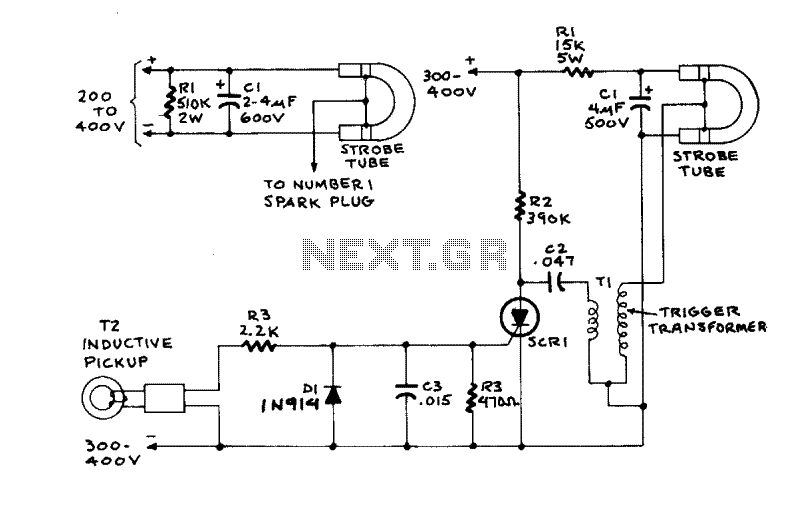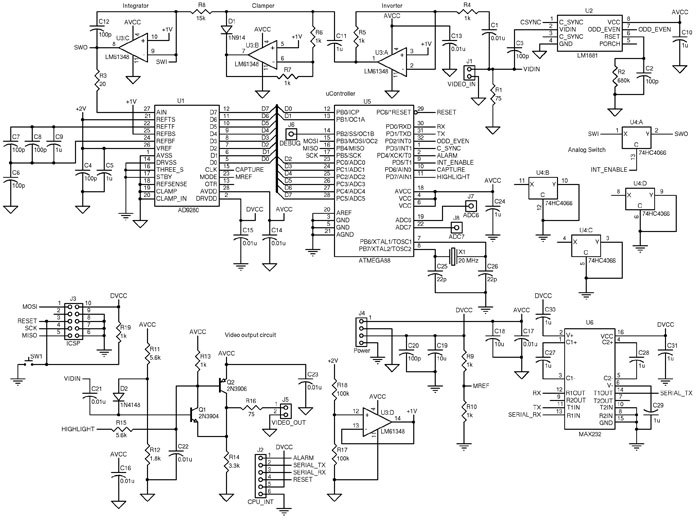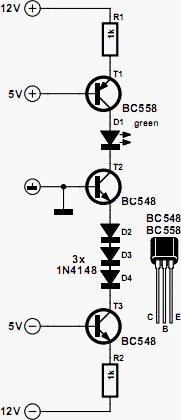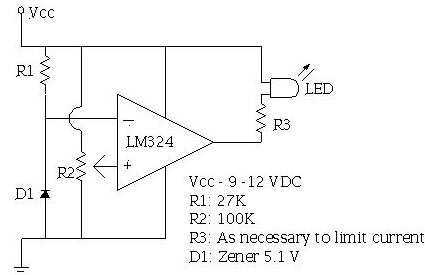
Cb modulation monitor

Connect this circuit to a transceiver using a coaxial T connector in the transmission line. Activate the transmitter (unmodulated), set switch 31 to CAL, and adjust resistor R2 for a full-scale reading. Return switch SI to the MOD position. The meter will display percentage modulation with an accuracy of 10%.
This circuit is designed for measuring the percentage of modulation in a transmission line by interfacing with a transceiver. The use of a coaxial T connector allows for seamless integration into the transmission line without significant signal loss.
Upon connecting the circuit, the transmitter should be keyed in an unmodulated state, ensuring that the signal being analyzed is a constant carrier wave. Setting switch 31 to the CAL position is essential for calibrating the circuit, allowing it to provide accurate readings. The adjustment of resistor R2 is critical; it must be fine-tuned to achieve a full-scale reading on the meter, which indicates that the circuit is properly calibrated to the specific characteristics of the transceiver and the modulation being measured.
Once calibrated, switch SI should be returned to the MOD position. In this configuration, the circuit will measure the modulation depth of the signal, providing a readout on the meter that reflects the percentage of modulation. The meter is designed to deliver readings with an accuracy of 10%, which is sufficient for many practical applications in radio transmission and communication systems. This level of accuracy ensures that users can monitor modulation levels effectively, facilitating optimal performance and compliance with transmission standards.
This circuit is particularly useful in settings where modulation levels must be monitored and adjusted to meet specific criteria, such as in broadcasting, amateur radio, and communications testing environments. Proper operation and calibration of this circuit contribute to enhanced signal quality and reliability in radio frequency applications.Connect this circuit to a transceiver with a coaxial T connector in the transmission line. Key the transmitter (unmodulated), set 31 to CAL, and adjust R2 for a full scale reading. Return SI to MOD position The meter will read % modulation with 10% accuracy.
This circuit is designed for measuring the percentage of modulation in a transmission line by interfacing with a transceiver. The use of a coaxial T connector allows for seamless integration into the transmission line without significant signal loss.
Upon connecting the circuit, the transmitter should be keyed in an unmodulated state, ensuring that the signal being analyzed is a constant carrier wave. Setting switch 31 to the CAL position is essential for calibrating the circuit, allowing it to provide accurate readings. The adjustment of resistor R2 is critical; it must be fine-tuned to achieve a full-scale reading on the meter, which indicates that the circuit is properly calibrated to the specific characteristics of the transceiver and the modulation being measured.
Once calibrated, switch SI should be returned to the MOD position. In this configuration, the circuit will measure the modulation depth of the signal, providing a readout on the meter that reflects the percentage of modulation. The meter is designed to deliver readings with an accuracy of 10%, which is sufficient for many practical applications in radio transmission and communication systems. This level of accuracy ensures that users can monitor modulation levels effectively, facilitating optimal performance and compliance with transmission standards.
This circuit is particularly useful in settings where modulation levels must be monitored and adjusted to meet specific criteria, such as in broadcasting, amateur radio, and communications testing environments. Proper operation and calibration of this circuit contribute to enhanced signal quality and reliability in radio frequency applications.Connect this circuit to a transceiver with a coaxial T connector in the transmission line. Key the transmitter (unmodulated), set 31 to CAL, and adjust R2 for a full scale reading. Return SI to MOD position The meter will read % modulation with 10% accuracy.





